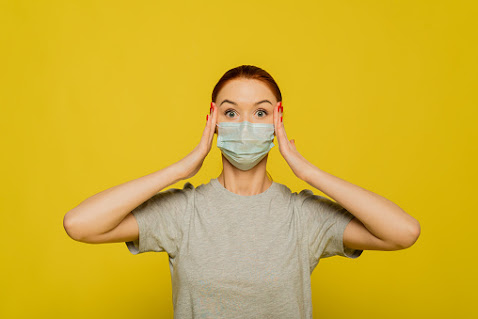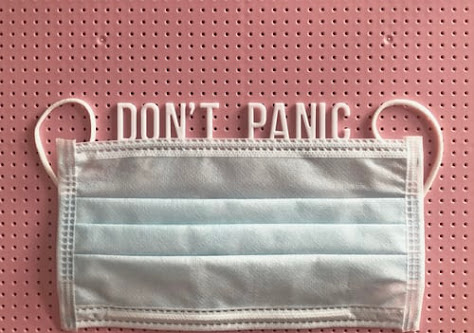Imagine someone asks you to present a project in front of a room full of people. With all eyes on you, you feel like fleeing. Or in other instances, you start trembling out of fear and anxiety of facing the public. The anxiety of experiencing social interactions is accompanied by a fear of passing out. This condition relates to Panic Attacks, triggered in people with Agoraphobia.
A prevalent issue is panic disorder. The incidence of agoraphobia or panic disorder was 1.70 percent in a single UK research. Psychological specific instance investigations regarding primary care settings with chest discomfort were revealed. The criteria for panic disorder was up to 25%. There are certain physical indications of the illness that are evident when one sees in the patient during a panic attack. Such as palpitations, high blood pressure, trembling, and sweating. These can occur in an elevated sympathetic activity as well.
The CEO of the coursework help firm said that the patient may be more worried about death or a serious physical ailment which endangers his life during a panic attack. A mental fitness exam indicates a representation of anxiety and anxiousness when such people present and speak. The effect on the patient should correspond to his/her mental condition. The processes of the mind should be normal. And the substance of cognition should be fundamental and healthy. But it may be concerned with death or disease.
Most bouts of panic attack last from 5 to 20 minutes. Some claim to be up to one-hour long. How serious your illness is depends on the amount of attacks you experience. Some people experience attacks once or twice in a month. Others have them once a week (NHS UK, 2021). While they are scary, panic episodes are not harmful. You will not have any physical injury from an attack. And if you have one, you will not find yourself in the hospital. Keep in mind that most of these symptoms might also be signs of other diseases. So you may not always have a panic attack. For instance, if you have very low blood pressure, you could have a rapid pulse.
Agoraphobia (including around 26% of patients) or social phobia, both are often linked with panic disorder (affecting about 33 percent of sufferers). There is an important link regarding mental disorders with lifetime incidence rates. As high as 50-60%, especially in the cases of depression. The probability of suicide attempts appears to be greater than in the general public. In one research, 98 percent of individuals with panic disorder had at least one comorbid disease. The most frequent ones were major depression and other anxiety disorders. Although other depressive illnesses and alcohol use disorders tended to be chronic, the chances of remission were very high.
Social Anxiety Disorder or Social Phobia triggers Panic Attacks. Social interactions inflict grave anxiety, embarrassment and self-consciousness. This feeling of people looking at you can disrupt daily functioning. Stress from Panic Attacks could disrupt relationships and work demands.
Following are the five social factors that trigger Panic Attacks.
Unpleasant Experiences
The an essay writing services company said that people who have had unpleasant or painful life experiences have panic attacks when they expose themselves to those conditions. Children who have experienced taunting, harassment, or abandonment are at risk. Also, laughing or embarrassment may be more susceptible to social anxiety. Apart from those, this condition may also include bad occurrences. These include familial discord, tragedy, or violence along with children who are bashful, shy and abandoned.
Fear of Judgement
The most common and prevalent trigger for panic attack is fear of judgement. People with social phobia tend to avoid situations due to fear of scrutiny. This includes.
- Fear of situations in which people might judge you.
- Worry about oneself getting embarrassed or humiliated.
- Intense dread of interaction or conversation with aliens.
- Fear that people will see you worrying.
- Fear of your physiological symptoms. Such as flushing or swelling, shaking, or a shaky voice.
- Keeping from activities or talking to people out of fear of confusion.
- Preventing circumstances in which one might be the focus.
- Fear in advance of an anticipated event or action.
Family Environment
Following an uncomfortable or embarrassing social condition, some people might develop considerable anxiety. There could also be a correlation between social disorder and parents. Parents that are more authoritarian or over protective of their youngsters. Such over protectiveness leads to the child being anxious. Such children feel insecure and afraid of people around them. They feel scared of scrutiny and end up having panic attacks. When social interactions tend to be cut off by family, children learn confinement.
Social Demands
Social anxiety disorder symptoms generally begin throughout the teenage years. Although it might cause symptoms in the beginning when you socialize, speak in public or have to do an essential job presentation. People with social phobia also face challenges in their academic life. Triggers like public speaking, group presentations or solo presentations all tend to provoke social anxiety and afterwards, panic attacks.
Physical Appearance
Having a look or condition that attracts notice. For example, face disfiguration, stench, or tremors. Tremors caused by Parkinson's disease might enhance self-awareness. This can cause social anxiety disorder in certain people. Which in turn leads to an unanticipated panic attack. People who have some kinds of facial scars or wounds tend to avoid public scrutiny. If they face a crowd, they undergo panic attacks.
Panic attacks are manageable and treatable. Social factors that trigger panic attacks are alterable. Allowing oneself to set priorities in life could help manage symptoms. Believing in oneself and what’s the worst that could happen. Nobody dies of a panic attack. One needs to remind oneself about the positive outcomes of life. Counseling or talking to someone about it also helps. Therapeutic interventions like Cognitive behavioral therapy is beneficial too. Alcohol consumption and drugs can induce or aggravate anxiety. And even coffee and nicotine help. But you might get nervous about quitting if you get hooked on to some of these substances. If you cannot stop yourself, look for a therapeutic program or community group. Or let your healthcare provider guide you regarding this situation.
References
NHS UK, 2021. Panic disorder. [online] nhs.uk. Available at: <https://www.nhs.uk/mental-health/conditions/panic-disorder/> [Accessed 24 September 2021].
Tidy, C., 2016. Panic Disorder. Anxiety and phobias. Panic disorder treatment.. [online] Patient.info. Available at: <https://patient.info/doctor/panic-disorder> [Accessed 24 September 2021].
Tilli, V., Suominen, K. and Karlsson, H., 2012. Panic disorder in primary care: Comorbid psychiatric disorders and their persistence. Available at: https://pubmed.ncbi.nlm.nih.gov/23113695/







0 Comments